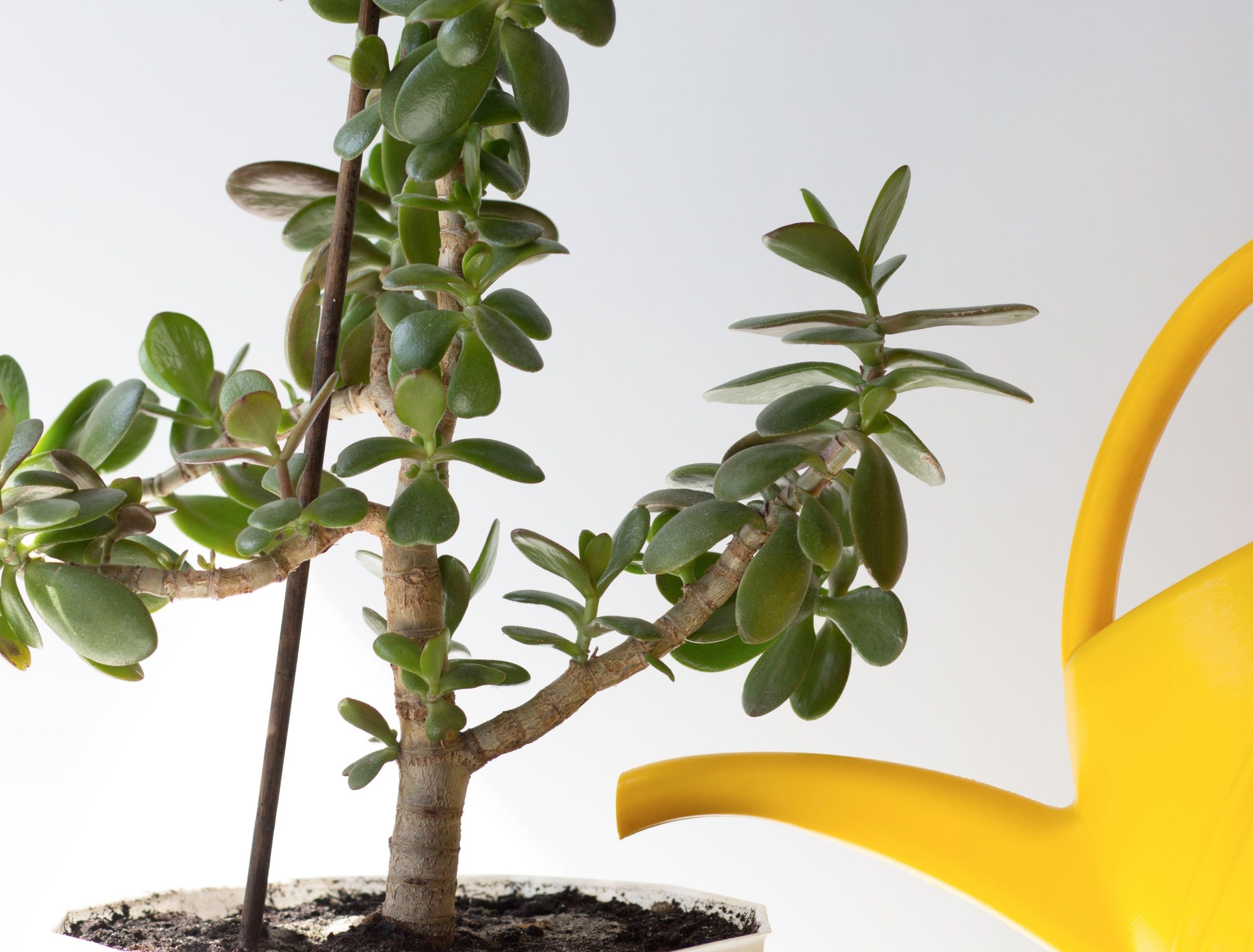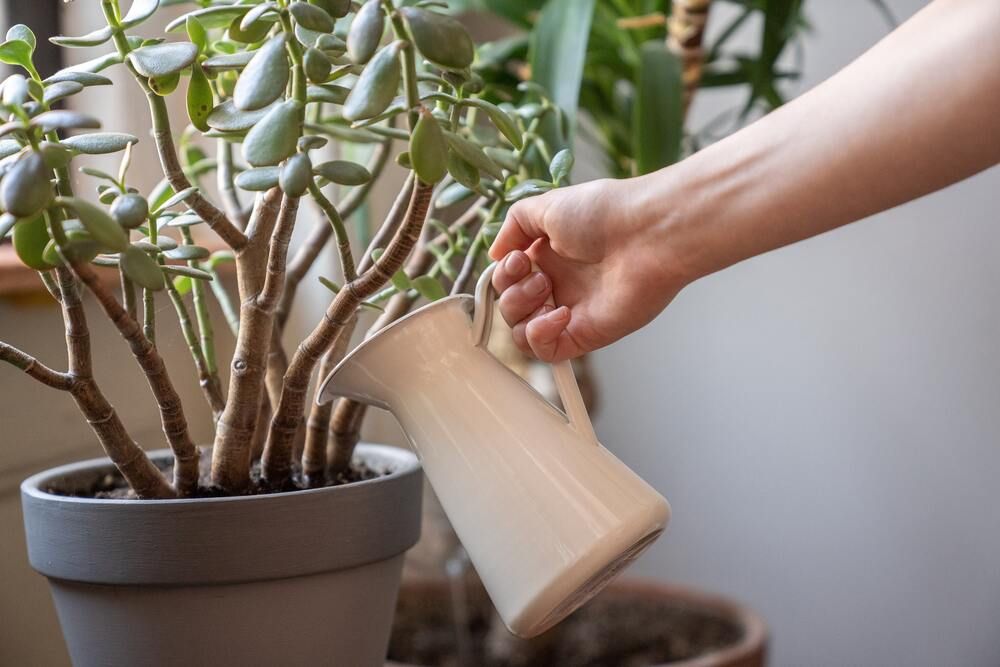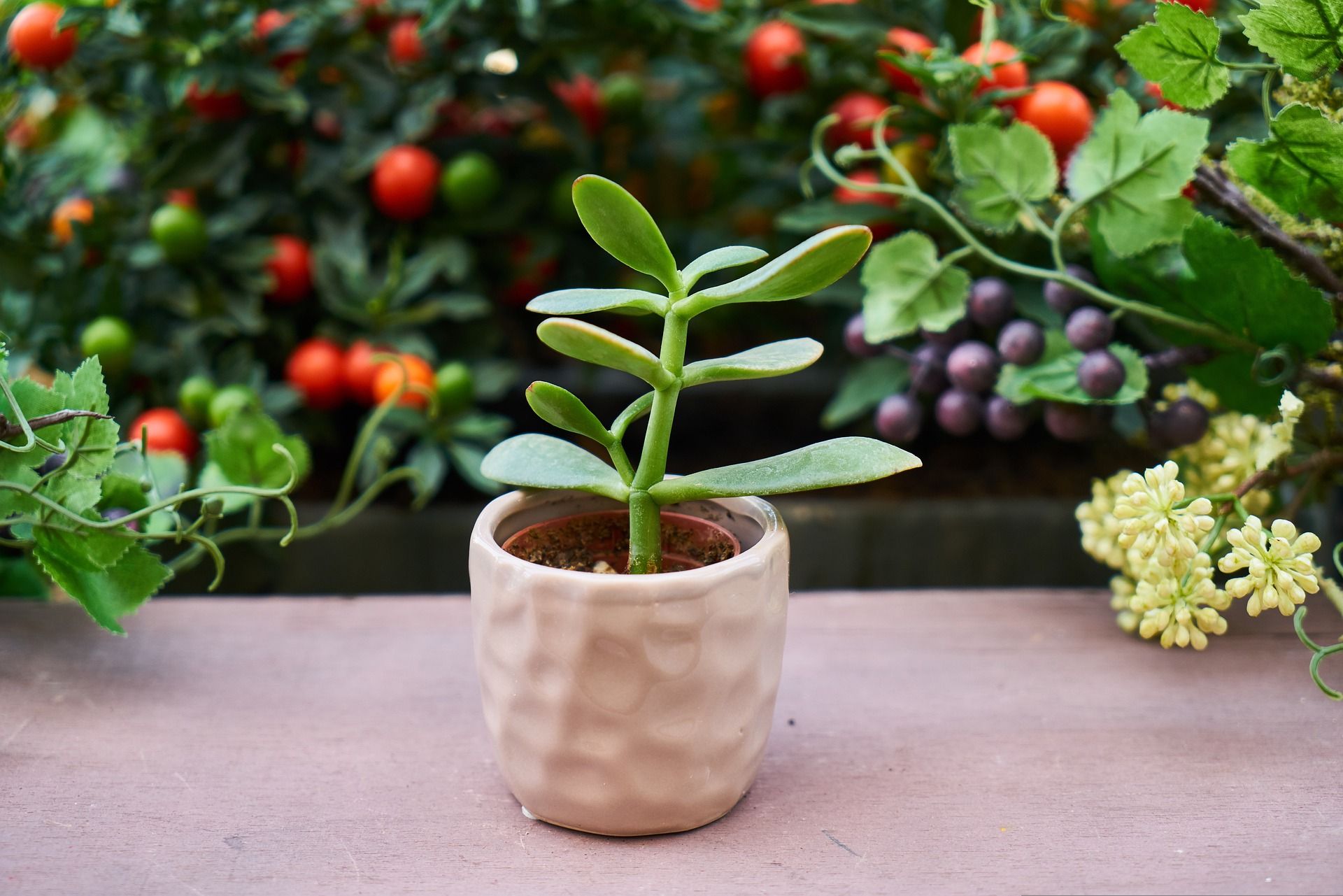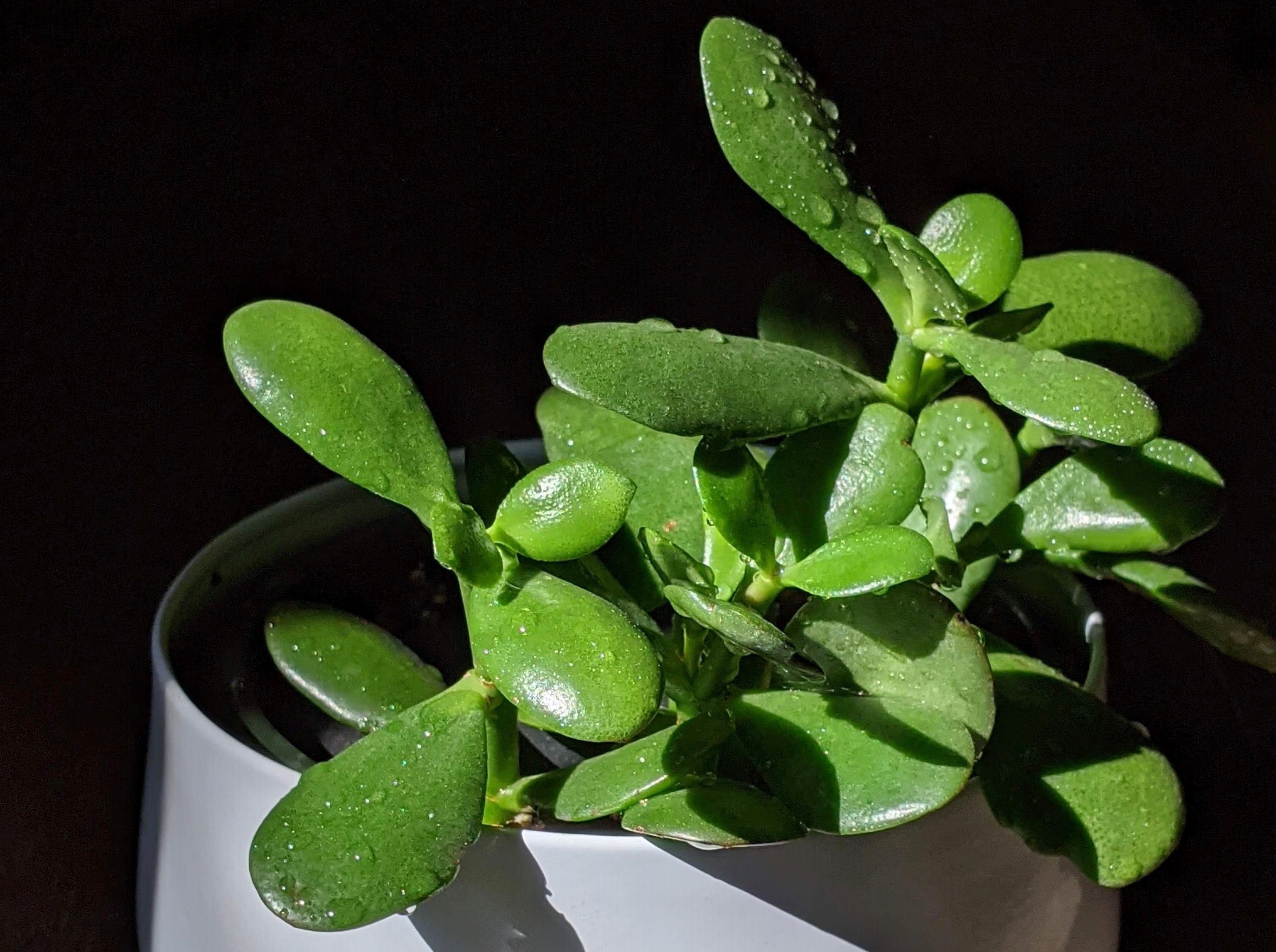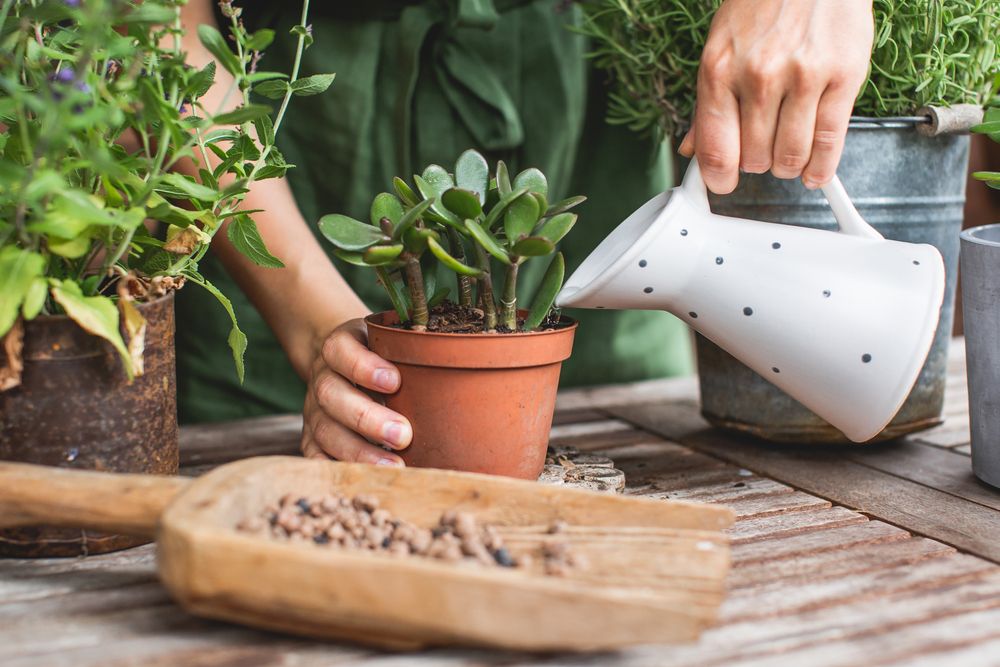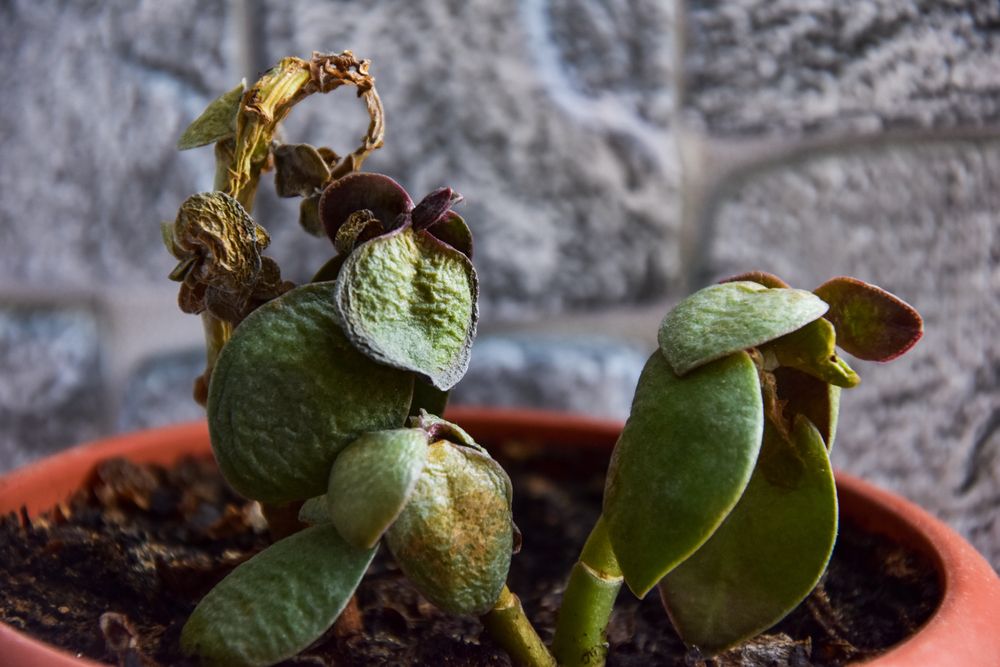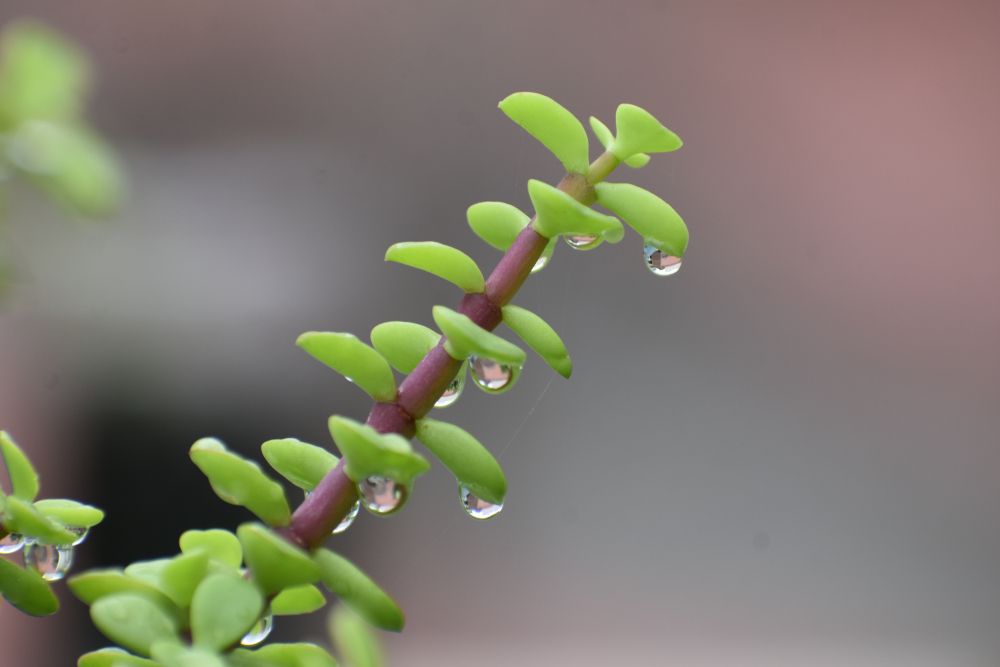How often to water your jade plant is a question that comes up a lot for people new to house plants. Because they are succulents, jade plants do not need a lot of water, but you still want to make sure you're providing them with enough hydration.
Below you’ll find some tips on how to tell if your jade plant needs more water and how to water it accordingly. Keep reading for more info and happy gardening!
How Often Should You Water Your Jade Plant
Image credits: Kevin Malik via Pexels
The most common question people ask about jade plants is how often they should water them. While there's no one definitive answer, there are some basic guidelines you can follow to ensure your plant stays healthy and vibrant.
A good way to start is by making a watering schedule. This is simple because jade plants have different watering requirements for their growing season and dormant period.
Summer And Spring – Active Growing Season
Image credits: Engin_Akyurt via Pixabay
Your jade plant will need more water in the spring and summer, as this is its active growing season.
When watering, keep a close eye on your soil. If it's dry throughout and not just the surface, then it's time to give your jade plant some water. You may find yourself watering your jade once a week or even once a month during these warmer months. It all depends on how quickly your soil dries out in the space where you keep your jade.
As long as you don't forget about your jade plant during the peak growing season, you'll be able to keep it looking healthy and beautiful all year round!
Fall and Winter- Dormant Period
Image credits: Susan Wilkinson via Unsplash
As the jade plant enters the inactive dormant period, it's growth can slow or even stop altogether. During this time, it won’t need as much water. Decrease the amount of water you give your plant assuring it's much less often than in spring and summer. Allow its soil to dry out fully between waterings.
Even larger jade plants may not need more than one or two waterings throughout their entire dormant season. If you want to care for your jade properly, remember to tailor your watering schedule to suit this special stage of its life!
Pro Tip: This plant is delicate and will react to the salts in tap water. That said, it's best to use filtered or distilled water.
Sings Of Overwatering in Jade Plants
Image credits: Krichevtsevavia Shutterstock
If your jade plant leaves become squishy and saturated, it may be a sign that you're giving this plant too much water.
While a jade plant can be quite hardy and forgiving when it comes to watering, there's such a thing as too much of a good thing! If you notice the leaves are looking droopy or mushy, try cutting back on the amount of water you give the plant.
As with any houseplant, consistent care is key. So make sure you're always providing your plant with suitable lighting conditions and proper drainage.
Sings Of Underwatering in Jade Plants
Image credits: atewi via Shutterstock
just because the jade plant is drought-resistant does not mean that you should ignore its watering needs altogether. If your jade plant starts to drop its leaves, or if the leaves look shriveled or brown spots appear on them, this is usually a sign that the plant needs more water.
Ultimately, determining how often you should water your jade plant comes down to paying close attention to its individual needs and adjusting accordingly. As long as you follow these basic guidelines and keep an eye out for any signs of trouble, your jade plant should thrive!
Care Tips for Your Jade Plant
Image credits: DesiLens via Shutterstock
If you want your jade plant to thrive, it’s important to give it the care and attention it needs. Here are a few tips that will help you keep your jade healthy!
Lighting
Established jade plants need plenty of sunlight to grow, so make sure yours gets at least six hours of direct light per day. Younger plants need just as much light, but indirect, so as to not burn their leaves.
If you notice that your jade plant is starting to become leggy, this means it isn’t getting enough light and needs to be moved somewhere where it will get more sunlight.
Watering
While jade plants do need some amount of water to survive, it’s important to avoid overwatering them. They can survive in fairly dry conditions, so make sure you let the soil dry out before watering it again. Also, avoid splashing the leaves of your jade plant when watering. This can cause rot and decay in a humid environment.
Soil
Neutral soil is best for jade trees. Try to find a potting mix that has a pH level of about 7 if you plan on repotting your plant.
Fertilizing
To help keep your jade healthy and thriving, fertilize it sparingly using special fertilizer made specifically for succulents and cacti.
Temperature
While different people have different opinions about what the best temperature for a jade plant is, most experts agree that the ideal daytime range of temperatures for this type of plant is somewhere between 65- and 75 degrees Fahrenheit. At night and in the winter, jade plants prefer temperatures of 55 degrees Fahrenheit. These plants are not build for cold temperatures, and are threatened by cold damage.
Patience!
Finally, remember that jade plants are very slow-growing. Be patient with yours, and don’t worry if it doesn’t look like much at first. In a few years, your plant will have grown into a beautiful and full jade tree!
Your Jade Can Flourish!
So, there you have it – everything you need to know about how often to water your jade plant. If you're looking for a beautiful and low-maintenance houseplant that doesn't require much attention, then this is the perfect option for you. Give it some love and care, and it will reward you with vibrant green leaves and lots of blooms for years to come.
Don’t forget to share this article with your friends and family! Do you have any tips or tricks for caring for a jade plant? Leave a comment below!

